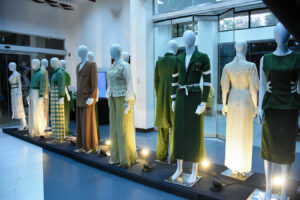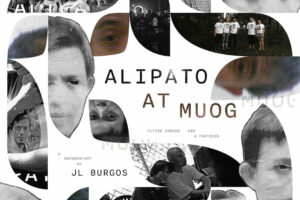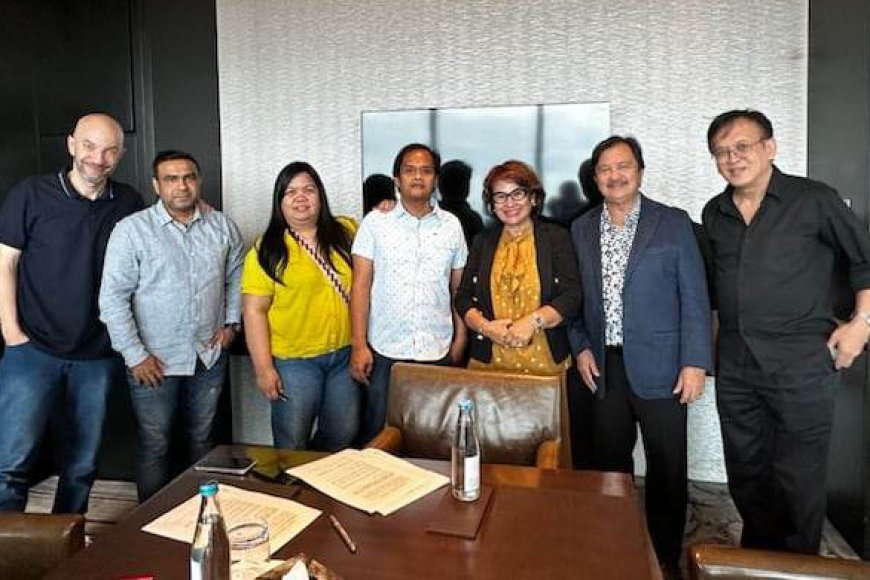Lean, green, and wearable
IT’S TALL, it’s green and it’s practically everywhere in the Philippines: it’s bamboo. To celebrate Philippine Bamboo Month, the DoST-PTRI (Department of Science and Technology – Philippine Textile Research Institute) is showing off a collection of clothes derived from bamboo textile fiber in an exhibit called Kawayarn (a play between the Tagalog word for bamboo, […]

IT’S TALL, it’s green and it’s practically everywhere in the Philippines: it’s bamboo.
To celebrate Philippine Bamboo Month, the DoST-PTRI (Department of Science and Technology – Philippine Textile Research Institute) is showing off a collection of clothes derived from bamboo textile fiber in an exhibit called Kawayarn (a play between the Tagalog word for bamboo, “kawayan” and “yarn”).
Participating designers include Amor Albano, Anthony Cruz Legarda, Avel Bacudio, and Bayo. On display is a wedding gown made of bamboo fiber blended with silk, worn by social entrepreneur Catherine Diquit, and her husband, Canadian-Filipino vlogger Kyle Jennerman, made by Francis Libiran.
The Kawayarn exhibit is ongoing until Sept. 30 at the Tela Gallery at the DoST-PTRI complex in Taguig.
There are coats, pants, suits, and gowns made from bamboo, but also the bits and pieces from the processes that transform bamboo poles into cloth.
The bamboo turns from slats into bamboo fiber through alkali treatment and mechanical softening and neutralization. It’s further treated with woolenization, degumming, scouring and bleaching, a second neutralization, and then is spun into threads.
In his speech during the exhibit opening on Sept. 12, Dr. Julius Leaño Jr., Director IV of the DoST-PTRI discussed the diverse uses of bamboo. “’Pag dating sa kinakain, may labong. ’Pag dating sa bahay, bahay-kubo, may bamboo pa rin. Ngayon, ’pag dating sa tela naman, nasusuot natin ’yong bamboo (When it comes to food, we have bamboo shoots. When it comes to housing, like in nipa huts, we still use bamboo. Now, when it comes to cloth, we can also wear bamboo).”
At a press conference earlier that day at the PTRI offices, he announced that bamboo is now one of the fibers covered by Republic Act 9242, or the Philippine Tropical Fabrics Law (an act prescribing the use of the Philippine tropical fabrics for uniforms of public officials and employees and for other purposes), joining the ranks of piña, abaca, and banana fibers. “Bamboo really represents the Filipino dream and it represents the Filipino spirit,” he said.
Mr. Leaño describes the properties of bamboo textiles during the press conference. He said it’s akin to the texture of banana or abaca — while coarse, they allow for thicker yarns, which means that it can be shaped into a variety of textures. That explains the translucent and flowy quality it has when combined with silk, and else the thickness and durability when combined with cotton. A project they have worked on with airlines to make clothing for flight attendants includes the requirement that the clothes be fire-resistant: they’ve done that too.
While people think that plant-based fibers are good for the environment, that is not necessarily the case. A lot of water and other resources can go into growing them (such as in the case of cotton). But Mr. Leaño made a point about the sustainable qualities of bamboo: it’s a carbon sink, which means it absorbs more carbon dioxide than it releases. It is also classified as an agriculture by-product, instead of a fiber crop that has to be tended (again, like cotton). “What we’re doing is substituting every single kilogram of cotton that we possibly can,” he said. This is because the weaving machines in the country are designed to process cotton fiber, which is why bamboo at present needs to be blended with it. Finally, bamboo has a fiber recovery of 30%, which means that for one kilogram of bamboo in its raw form yields 300 grams of fiber, more than the rate of abaca, for example, which only yields 20 grams per kilogram.
According to a chart supplied to us, bamboo rises up in the value chain from P250 in its first processing to P512 per yard in its final form. As for the quantities they have, they can supply orders for up to 100 yards. He calculates that at these prices, one can have a bamboo barong for less than P2,000. The strategy right now for the DoST-PTRI is to promote bamboo through a trickle-down approach: “Fashion always starts from class to mass. Hindi pwedeng mass to class. It will never happen, it will never sell.”
However, he said, “Eventually, it will become in a way, scalable to a certain mass level.” He believes this will happen in a matter of a few years. This while reminding that the price of the bamboo fiber has everything to do with providing livelihood for the farmers and the other workers who process the plant. The agency has opened Bamboo Textile Fiber Innovation Hubs in Abra, Isabela, La Union, and Bukidnon, with others planned in Pangasinan, Leyte, Antique, and other regions. “This is not just about fashion, about looking good. More importantly, at the core of what we’re doing is being able to make a difference.”
The DoST-PTRI is also working on developing other plant-based textiles. These include the vegetable saluyot (Corchorus olitorius, under the family Malvaceae; making it related to cotton). Known as a source of jute, the annual plant leaves its bark behind when it dies, which is what they’re working with). According to Mr. Leaño, the saluyot-based fiber has a texture akin to ramie (a fiber whose use they’re also trying to revive). Other projects include making textiles with water hyacinth, a plant that can sometimes cause disaster when it grows in excess due to their propensity to clog waterways. “Let’s give it about two to three years. Maybe we’ll be launching these very soon,” he said.
The Kawayarn exhibit will run until Sept. 30 at the Tela Gallery at the DoST-PTRI complex in Taguig.























